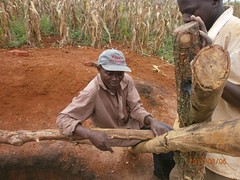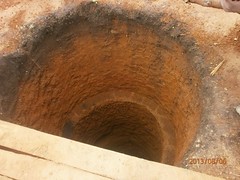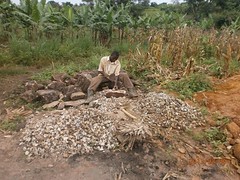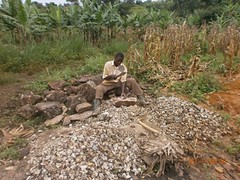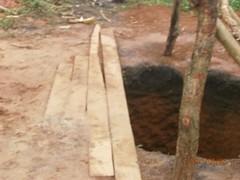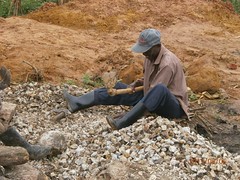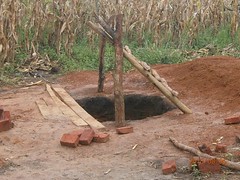The report below from our partner in the field gives some great information on the construction of a new hand-dug well in the The report below from our partner in the field gives some great information on the construction of a new hand-dug well in the Kitengule-Kyecumu community in Uganda:
Kitengule – Kyecumu is located in Kiruuli Parish, Pakanyi sub-county in Masindi District. The community in this village depend on subsistence farming and the major crop is maize. Those who don’t have land for farming are laborers on other peoples’ gardens. This community has never had access to clean water. Residents collect water form open sources which is shared with frogs and wild animals as this village is located at the peripheral of Murchison Falls National park. Water borne diseases like bilharzia, dysentery and typhoid are common in this community. The nearest water source from this village is about four kilometers away and access to this well is challenging. People fear the wild animals from the park as several people have been attacked and even killed.
Kitengule – Kyecumu village has about twenty eight households with an estimated population of one hundred fifty people. The sanitation in this village is poor. At the time of our baseline survey only two households had improved latrines in the whole village. Open defecation is a common phenomenon in this village. TWT is committed to changing the lives of the community members through providing them access to clean and safe water and mobilizing them against open defecation.
The Water Trust will have an intensive program to provide access to clean water and sanitation in this village. The community will participate in excavating and construction of the water source. In the mean time the aim is that all households own an improved latrine. Many households don’t use a latrine but use the bush. Due to open defecation, faeces are spread all over the village. This leads to (fatal) diseases and contamination of the groundwater. Our aim is that the community is able to live a healthy life and free of preventable diseases. We endeavor that at the end of our presence in the community; people have both access to sustainable clean water and access to sanitation. As a strategy to achieve is, we don’t commission the water source until all households have latrines. At the moment, we have organized families to form digging groups for latrine construction and empowered them with tools to use.
Construction Progress:
August 10, 2013
The community has been mobilized to identify a place that suits the shallow hand dug well. Upon siting the well the community will contribute all local materials like sand, hard core, bricks and labor. We have have deployed one of our technicians to live and provide technical support to this community. This community will find him a place to stay, and also provide him with food until they complete this project.
August 14, 2013
Excavation has began and it is moving on very well with the support of the community. Currently the depth of the well is 8ft and no challenges have been reported.
August 19 , 2013
Today we hit water and we have continued to deepen. Soil formation is so good and we are happy about this.
August 26, 2013
We began construction of this water source today and we expect it to take us a few day. Soon the people of Kyecumu will have access to clean and safe water.
[Editor's Note: GPS coordinates for this project are approximate.]


 Rehabilitation Project
Rehabilitation Project







